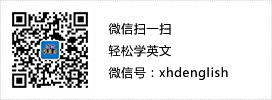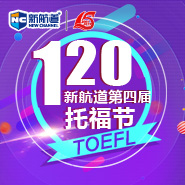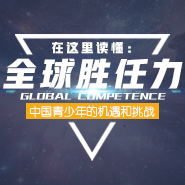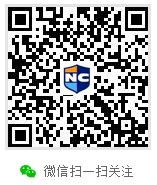雅思阅读之威廉•吉尔伯特与磁场学
2014-04-04 15:22 供稿单位: 新航道
出国英语考试有哪些 雅思6.5是什么水平 雅思阅读评分标准 托福阅读评分标准 雅思和托福的区别
Test 1
Reading Passage 1 (对应考试日期:2012年9月6日 2010年8月5日 2007年9月20日 2007年1月20日)
You should spend about 20 minutes on Questions 1-13 which are based on
Reading Passage 1 on the following page.
Questions 1-7
Reading passage 1 has seven paragraphs A-G.
Choose the correct heading for each paragraph from the list of headings below.
Write the correct number i-x in boxes 1-7 on your answer sheet.
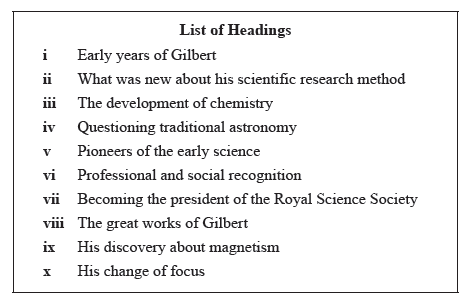
1 Paragraph A
2 Paragraph B
3 Paragraph C
4 Paragraph D
5 Paragraph E
6 Paragraph F
7 Paragraph G
William Gilbert and Magnetism
A 16th and 17th centuries saw two great pioneers of modern science: Galileo and Gilbert. The impact of their findings is eminent. Gilbert was the first modern scientist, also the accredited father of the science of electricity and magnetism, an Englishman of learning and a physician at the court of Elizabeth. Prior to him, all that was known of electricity and magnetism was what the ancients knew, nothing more than that the lodestone possessed magnetic properties and that amber and jet, when rubbed, would attract bits of paper or other substances of small specific gravity. However, he is less well-known than he deserves.
B Gilbert’s birth predated Galileo. Born in an eminent local family in Colchester county in the UK, on May 24, 1544, he went to grammar school, and then studied medicine at St. John’s College, Cambridge, graduating in 1573. Later he traveled in the continent and eventually settled down in London.
C He was a very successful and eminent doctor. All this culminated in his election to the president of the Royal Science Society. He was also appointed the personal physician to the Queen (Elizabeth I), and later knighted by the Queen. He faithfully served her until her death. However, he didn’t outlive the Queen for long and died on December 10, 1603, only a few months after his appointment as personal physician to King James.
D Gilbert was first interested in chemistry but later changed his focus due to the large portion of mysticism of alchemy involved (such as the transmutation of metal). He gradually developed his interest in physics after the great minds of the ancient, particularly about the knowledge the ancient Greeks had about lodestones, strange minerals with the power to attract iron. In the meantime, Britain became a major seafaring nation in 1588 when the Spanish Armada was defeated, opening the way to British settlement of America. British ships depended on the magnetic compass, yet no one understood why it worked. Did the pole star attract it, as Columbus once speculated; or was there a magnetic mountain at the pole, as described in Odyssey, which ships would never approach, because the sailors thought its pull would yank out all their iron nails and fittings? For nearly 20 years William Gilbert conducted ingenious experiments to understand magnetism. His works include On the Magnet and Magnetic Bodies, Great Magnet of the Earth.
E Gilbert’s discovery was so important to modern physics. He investigated the nature of magnetism and electricity. He even coined the word “electric”. Though the early beliefs of magnetism were also largely entangled with superstitions such as that rubbing garlic on lodestone can neutralize its magnetism, one example being that sailors even believed the smell of garlic would even interfere with the action of compass, which is why helmsmen were forbidden to eat it near a ship’s compass. Gilbert also found that metals can be magnetized by rubbing materials such as fur, plastic or the like on them. He named the ends of a magnet “north pole” and “south pole”. The magnetic poles can attract or repel, depending on polarity. In addition, however, ordinary iron is always attracted to a magnet. Though he started to study the relationship between magnetism and electricity, sadly he didn’t complete it. His research of static electricity using amber and jet only demonstrated that objects with electrical charges can work like magnets attracting small pieces of paper and stuff. It is a French guy named du Fay that discovered that there are actually two electrical charges, positive and negative.
F He also questioned the traditional astronomical beliefs. Though a Copernican, he didn’t express in his quintessential beliefs whether the earth is at the center of the universe or in orbit around the sun. However he believed that stars are not equidistant from the earth, but have their own earth-like planets orbiting around them. The earth is itself like a giant magnet, which is also why compasses always point north. They spin on an axis that is aligned with the earth’s polarity. He even likened the polarity of the magnet to the polarity of the earth and built an entire magnetic philosophy on this analogy. In his explanation, magnetism was the soul of the earth. Thus a perfectly spherical lodestone, when aligned with the earth’s poles, would wobble all by itself in 24 hours. Further, he also believed that suns and other stars wobble just like the earth does around a crystal core, and speculated that the moon might also be a magnet caused to orbit by its magnetic attraction to the earth. This was perhaps the first proposal that a force might cause a heavenly orbit.
G His research method was revolutionary in that he used experiments rather than pure logic and reasoning like the ancient Greek philosophers did. It was a new attitude toward scientific investigation. Until then, scientific experiments were not in fashion. It was because of this scientific attitude, together with his contribution to our knowledge of magnetism, that a unit of magneto motive force, also known as magnetic potential, was named Gilbert in his honor. His approach of careful observation and experimentation rather than the authoritative opinion or deductive philosophy of others had laid the very foundation for modern science.
Questions 8-10
Do the following statements agree with the information given in Reading Passage 1?
In boxes 8-10 on your answer sheet write
TRUE if the statement agrees with the information
FALSE if the statement contradicts the information
NOT GIVEN if there is no information on this
8 He is less famous than he should be.
9 He was famous as a doctor before he was employed by the Queen.
10 He lost faith in the medical theories of his time.
Questions 11-13
Choose THREE letters A-F.
Write your answers in boxes 11-13 on your answer sheet.
Which THREE of the following are parts of Gilbert’s discovery?
A Metal can be transformed into another.
B Garlic can remove magnetism.
C Metals can be magnetized.
D Stars are at different distances from the earth.
E The earth wobbles on its axis.
F There are two charges of electricity.
真题解析
Reading Passage 1. William Gilbert and Magnetism
题目详解
Questions 1-7
思路
这种题型忌讳寻找主题句或中心句,因为每个人对段落中心思想的判断通常不同,而且每个段落的首尾句也不一定是主题句或中心句,所以的方法是通过对每位考生都能读懂的标题进行反向思维,然后和段落内容比较,排除作答。
题目中的10 个不同标题可做如下反向思维:
i. Early years of Gilbert
反向思维词:early years(early 对应时间)
如果某段选这个标题,则该段落应该提到Gilbert 这个人的早年事迹,例如:出生地、小时候做过什么调皮捣蛋的事情等等。
ii. What was new about his scientific research method
反向思维词:scientific research method
如果某段选这个标题,则该段落至少应该提到“scientific research method”这个细节概念,然后讲Gilbert 的这个scientific research method 有什么独特之处或新意,还可能出现与别的研究方法的比较。
iii. The development of chemistry
反向思维词:chemistry,development( development对应时间)
如果某段选这个标题,则该段落必须要提到“chemistry”,同时应该出现时间,大概会讲“公元前3 世纪中国人发明了化学,公元1 世纪化学传播到欧洲”之类的事情。
iv. Questioning traditional astronomy
反向思维词:astronomy
如果某段选这个标题,则该段落必须要提到“astronomy”或至少出现很多关于天文学方面的词汇。
v. Pioneers of the early science
反向思维词:early,pioneers( early 对应时间,pioneers 对应人名)
如果某段选这个标题,则该段落应该提到一个早期的时间,同时出现多个科学家的名字。
vi. Professional and social recognition
没有特定的反向思维词,但是如果某段选这个标题,则该段落应该提到Gilbert 在事业上如何被认可,也就是取得怎样的成就,以及社会地位如何高等等。
vii. Becoming the president of the Royal Science Society
反向思维词:Royal Science Society
如果某段选这个标题,则该段落必须提到“Royal Science Society”,而且大概是讲Gilbert当时如何成为这个机构的president,以及当时的斗争或成为president 之后的作为、贡献等。
viii. The great works of Gilbert
反向思维词:works(对应具体著作书名)
如果某段选这个标题,则该段落应该提到Gilbert 的著作,一般以书名的形式出现(斜体),还可能写到这些著作产生的深远影响。
ix. His discovery of magnetism
没有特定反向思维词,如果某段选这个标题,则该段落应该讲到Gilbert 关于磁场学方面的发现,出现大量的细节信息和专业词汇。
x. His change of focus
没有特定反向思维词,不好进行反向思维。
解答
1. Paragraph A: 段落开头提到具体时间“16th,17th centuries”,同时出现人名Galileo和Gilbert,与标题v 的“early”和“pioneers”对应,段落主体部分讲述这两个人都是伟大的科学家,且对Gilbert 进行了更详细的介绍。其余标题的信息该段落都没有提到,故选择标题v。
2. Paragraph B: 段落明显提到了Gilbert 的出生、早年教育和旅行经历,与标题i 相符。其余标题的信息该段落都没有提到,故选择标题i。
3. Paragraph C: 该段落虽然提到了Gilbert 成为“Royal Science Society”的“president”,与标题vii 对应,但是明显这个信息在全段落中只是一个细节信息,是Gilbert 诸多成就其中之一,并没有提到成为president 的过程,所以该选项应该排除。该段落主要讲述了Gilbert 的诸多成就:出色的医生,成为president,被女王指派为个人医生,以及最终被加冕为爵士,对应段落标题vi。其余标题的信息该段落都没有提到,故选择标题vi。
4. Paragraph D: 段落讲述了Gilbert 的兴趣从化学转换到物理的过程,对应标题x。虽然段落提到了Gilbert 的一些著作,但是很明显这个信息只是全段落中的一个细节,且其余标题的信息该段落都没有提到,故选择标题x。
5. Paragraph E: 段落讲述了Gilbert 在物理学上的研究,并出现了大量具体的、细节的研究成果信息,对应标题ix。其余标题的信息该段落都没有提到,故选择标题ix。
6. Paragraph F: 段落主要讲述了天文方面的内容,并出现了大量天文学术语,对应标题iv。其余标题的信息该段落都没有提到,故选择标题iv。
7. Paragraph G: 段落主要讲述了Gilbert 在研究方法方面的创新,对应标题ii。其余标题的信息该段落都没有提到,故选择标题ii。
Questions 8-10
解答
8. 根据顺序性原则,定位于段落A 一句“He is less well-known than he deserves.”题目是原文的同义表达,所以选择True。
9. 利用细节词“doctor”和“Queen”,定位于段落C 开头部分“He was a very successful and eminent doctor…appointed the personal physician to the Queen.”这里是一个顺序描述,所以他是在被雇佣前就已经famous(对应原文eminent)。题目是对这个原文信息的简单归纳与总结,所以选择True。
10. 原文中没有提到Gilbert 对当时“medical theories”的任何信息,只在D 段落提及他丧失了对化学的兴趣。题目出现了原文未提及的细节信息或概念,所以选择Not Given。
Questions 11-13
思路
这种多选多的选择题具有信息分散的特点,且通常具有归纳总结性特征,在雅思阅读中属于难题,所以应该放在做题顺序的,在其余细节题做完之后再来解答,此时更容易定位。做题过程中,只能对每一个选项进行原文定位,阅读原文信息并判断。
解答
选项A,金属转变为其他金属“metal can be transformed ”对应炼金术“alchemy”,定位于段落D 开头,但是文中明显说到Gilbert 因为不相信炼金术转而投入对物理的研究。所以不可能属于他的研究发现,排除。
选项B,利用细节词“garlic”定位于段落E 第三句话,但是原文明显提到这是迷信(“superstition”),所以也不属于他的研究发现,排除。
选项C,金属被磁化对应段落E 中间部分“Gilbert also found that metals can be magnetized by rubbing materials…”,明显属于他的研究发现(对应单词“found”),为正确答案。
选项D,根据选项天文学内容定位于段落F,利用细节词“star”和“earth”定位与该段落第三句话“he believed that stars are not equidistant from the earth”,明显属于他的研究发现(对应单词“believe”),为正确答案。
选项E,与选项D 相同,也定位与段落F,根据细节信息“wobble on its axis”定位与该段落倒数第二句话“he also believed that suns and other stars wobble just like the earth does…”,明显属于他的研究发现(对应单词“believe”),为正确答案。
选项F,利用细节信息“two charges of electricity”,定位于段落E 一句话。原文明显提到这是法国人du Fay 的发现,所以不属于Gilbert 的研究发现,排除。
参考译文
威廉 · 吉尔伯特与磁场学
A 16、17 世纪见证了两位伟大的现代科学先驱的诞生:伽利略与威廉· 吉尔伯特。他们在科学上的发现影响深远。吉尔伯特是位真正意义上的现代科学家,作为现代电磁学之父,他是一位极有学识的英国人,同时也是伊莉莎白宫廷的一名内科医生。在他之前,人们对电磁学的认知还停留在古代,只知道天然磁石拥有磁性,以及琥珀和黑玉在被摩擦时能够吸附纸片等细小重量的物体。尽管如此,与他的贡献相比,吉尔伯特并不那么为人所知。
B 吉尔伯特出生早于伽利略。1544 年3 月24 日,他出生在英国科尔切斯特当地一个显赫的家庭中,他读完大学预科学校之后在剑桥圣约翰学院学习医学,并于1573年毕业。此后,吉尔伯特环游了欧洲大陆并最终定居伦敦。
C 他是一名非常成功并且杰出的医生。在他当选为英国皇家科学学会主席之时,他的事业达到峰。同时吉尔伯特还被任命为女王(伊丽莎白一世)的私人医生,之后被女王加封为爵士。他忠诚地为女王服务,直到她辞世。但是吉尔伯特并没有比女王多活太久。1603 年12 月10 日,在被任命为詹姆士国王的私人医生几个月之后,他便去世了。
D 起初吉尔伯特感兴趣的是化学,但很快他的注意力就转移到了炼金术所带来的大量神秘现象上(比如金属的融化变形)。在研究了古代理论后,他逐渐对物理学产生了兴趣,特别是古希腊人关于天然磁石的知识,这种奇特的矿物拥有吸附铁器的力量。当时,英国在1588 年打败了西班牙舰队从而成为一个主要的航海国家,为英国在美洲建立殖民地开辟了道路。此时英国舰船依靠罗盘在大海中航行,然而并没有人了解它的工作原理。究竟是像哥伦布曾经猜测的那样:北极星吸引了罗盘指针?还是像《奥德赛》中描述的那样:在极地有座磁山,船只不得接近,因为水手们相信,巨大的磁力会把船上的铁钉、铁制配件拔出?20 年过去了,吉尔伯特进行了大量的创新性实验来理解磁学。他的著作包括《磁石论》、《地磁学》等。
E 吉尔伯特的发现对现代物理学非常重要。他研究了电与磁的内在特性,他甚至创造了“发电的”这个单词。早期有关磁性的观点充斥着大量迷信色彩,比如认为在磁石上研磨大蒜能够抵消磁石的磁性,其中一个例子就是船员们甚至相信大蒜的味道就能干扰到罗盘,这也是为什么舵手禁止在船上罗盘附近吃大蒜的原因。吉尔伯特还发现通过使用毛皮、塑料等类似材料摩擦金属,能够使金属磁化。他将磁体两端命名为“北极”和“南极”。这些磁极根据磁性不同而相互吸引或者排斥。此外,一般的铁器都会被磁体所吸附。尽管他已经开始研究电与磁之间的关系,但遗憾的是他没能完成此项工作。他关于使用琥珀和黑玉产生静电的研究只证实了带电的物体可以像磁体一样吸附小纸片之类的东西。之后法国人du Fay 发现了这其中存在两种电荷,正电荷和负电荷。
F 吉尔伯特还对传统天文学提出了质疑。尽管他是一位哥白尼主义者,但他的理论精髓并不在于地球是宇宙的中心还是绕太阳运行,而在于他认为天体和地球并不是等距离的,它们拥有像地球一样的行星围绕它们运行。地球本身就像一个巨大的磁体,这也是为什么罗盘总是指向北方的原因。地球沿着由自身磁极矫正的轴心进行旋转。吉尔伯特甚至把磁体的磁极比作地球的磁极,并基于这种类比建立了一套完整的磁学理论。在他的解释中,磁性是地球的精髓。因此一个完美的球型天然磁石在和地球磁极相对应后,将会24 小时自转一周。此外,他还认为太阳和其他天体像地球一样围绕着一个透明内核进行自转,并推测月亮可能也是一个磁体,从而导致它被地球吸引而围绕地球运行。这或许是人类认识到天体运行轨迹可能是由外力导致的。
G 他用实验进行研究的方法是革命性的。与古希腊哲学家那样在脑海中进行纯理论的思考不同,这是一种全新的科学研究态度。在当时,科学实验还不那么流行。正是由于这种科学态度,以及他对磁学理论的贡献,人们以“吉伯”作为磁电动力也就是磁动势的单位。和其他人依靠权威理论或演绎逻辑的方式不同,他的细心观察和严谨实验的方法为现代科学奠定了坚实的基础。
- 上一篇:雅思口语题库总结
- 下一篇:雅思大作文Task 2写作

- 时时分享励志成长、英语学习、考试信息、留学动态等。《轻松学英文》致力于为广大英语学习爱好者提供青少英语、雅思、托福、SAT及留学规划等权威学习和资讯内容,力求帮助学生提高英语运用能力,在轻松快乐的环境中走向英语成功之道!
精彩专题
更多视频荟萃
更多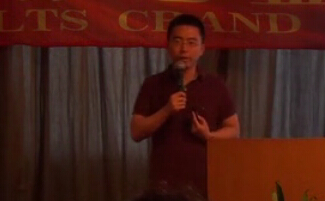
-
新航道姚骏鹏-雅思阅读高分攻略
时长:03-06
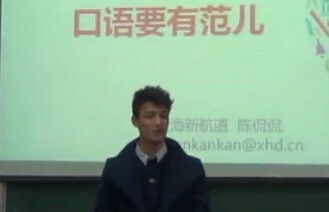
-
新航道陈侃侃-雅思口语要有范儿
时长:03-06

-
【3分钟学雅思】王大锤告诉你为啥药不能停
时长:01-12

-
【3分钟学雅思】全世界个感官餐厅
时长:01-12
热门文章
更多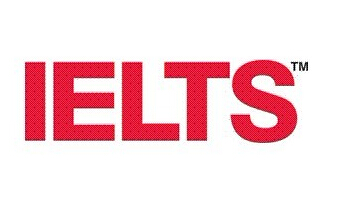
-
8月31日雅思广州考机考初体验
选择机考模式的考生将通过机考模式参加听...

